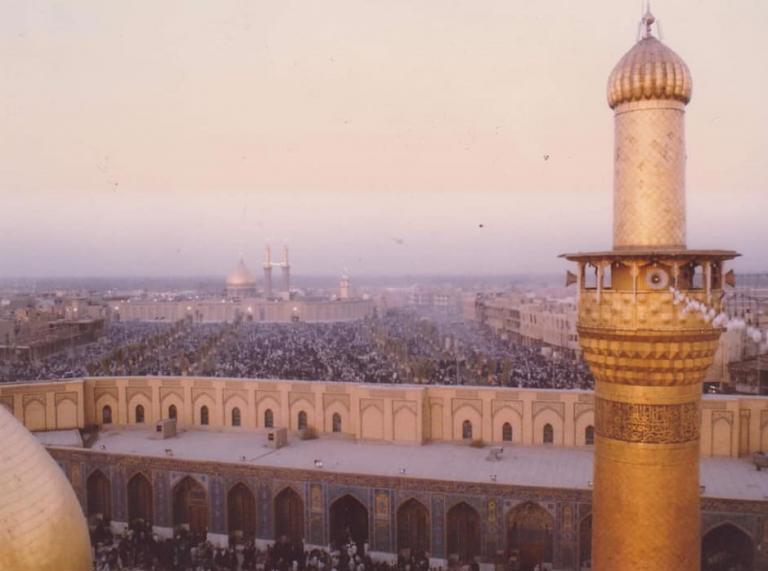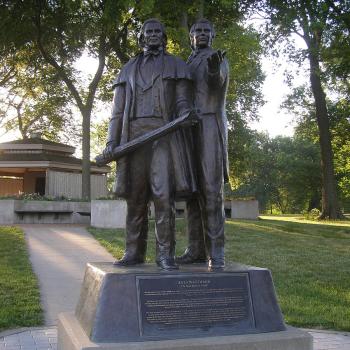
In AD 632:
Muhammad was dead. Now came the question of succession. The problem was that the founder of Islam left no clear instructions on this question. Some felt that he had designated Ali, his cousin and son-in-law and one of the earliest male converts to Islam, to be his successor, but most in the community, including many whose loyalty to the Prophet cannot plausibly be denied, seem to have known of no such thing.
By the time of his passing, the Prophet had come to control the entire Arabian landmass. Virtually every tribe and individual in the peninsula had pledged obedience to him. Many of the Arabian tribes, however, understood their submission agreements as applying only to Muhammad personally. Now that he was gone, they would certainly feel no allegiance to his successors. They could be expected to go their own way. They would recognize no obligation to do otherwise. (They had, it will be recalled, no notion of government. Their loyalty was to a person; of a continuing institution apart from individuals they had no concept.) Therefore, in all of the chaos surrounding the Prophet’s unexpected death, certain clear thinkers understood that some action had to be taken quickly before the whole structure of Muhammad’s nascent Arabian proto-state unravelled. Umar, the sources say, grabbed Abu Bakr, the elderly and highly respected Muslim whom we have already met, and took him to a place where a meeting on the succession question was underway. (The Prophet was not yet buried, and Ali was busy attending to the details of the funeral.)
At that meeting, perhaps before many of those present had a very clear idea of what was going on, Abu Bakr was acclaimed the leader of the community. All there solemnly pledged their loyalty to him. Then others in the community did so as well.
Some, though, did not. Ali, the Prophet’s cousin and son-in-law who had distinguished himself by heroic deeds on behalf of the faith in earlier military conflicts, felt that it was his right as kinsman to Muhammad to succeed him in the rule of the community.[1] (No man could succeed Muhammad in his prophetic capacity. Muhammad, virtually all of his followers are agreed, was the last of the prophets.) A number of pious Muslims supported Ali’s claim. As the years and generations passed, this group came to be known in Arabic as the shi’at ‘Ali, “the faction of Ali.” This is the origin of the group that we know in English today as the Shi‘ites.[2] The dispute between them and their opponents, who gradually assumed the name of Sunnis, deepened and grew sharper.[3] Where once the dispute had been political, it came to include differences over theology and law. The political disagreement festered. The Shi‘ites grew more and more embittered as their leaders were harassed and kept from power. There is among them a deep sense of grievance, of having been usurped, abused. This tradition or traditional position is kept alive, even nourished, by rituals designed to do just that. The most spectacular and significant instance of these recalls the killing of Husayn, the Prophet’s grandson, at a place in Iraq called Karbala, and the massacre of much of his family. This horrible event occurred on the tenth day of the Muslim month Muharram, in the year 680 A.D.[4] Shi‘ites around the world still commemorate it annually. Indeed, in something very similar to the passion plays of medieval Europe, they actually reenact it, flagellating themselves, chanting lamentations, working themselves to a high pitch of emotion and excitement. This is the holy time of Ashura, or “the tenth.”
[1] Several nineteenth-century Orientalists saw a similarity between the Shi‘ites and the Reorganized Church of Jesus Christ of Latter Day Saints, now renamed the Community of Christ. Both groups expected the succession to the founding prophet to remain in the prophet’s family. But the Shi‘ites arguably have the more radical theology in Islam, whereas the Community of Christ is far closer to mainstream Protestantism than is the Latter-day Saint movement headquartered in Salt Lake City and has now abandoned the notion of family succession.
[2] Pronounced, of course, “Shee-ites.”
[3] The singular, Sunni, should be pronounced roughly “Soon-nee.”
[4] 10 October 680 A.D.
Posted from Seaside, Oregon












